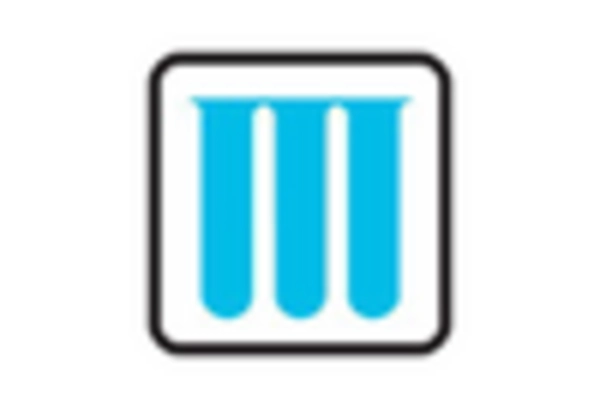Expansion of Telehealth Services
The expansion of telehealth services is emerging as a key driver for the inhaled corticosteroid-device market. With the increasing adoption of telemedicine, patients can now consult healthcare providers remotely, facilitating easier access to prescriptions for inhaled corticosteroids. This trend is particularly beneficial for individuals living in rural or underserved areas, where access to healthcare may be limited. The convenience of telehealth may encourage more patients to seek treatment for respiratory conditions, thereby increasing the demand for inhaled corticosteroid devices. As telehealth continues to evolve, it is likely to play a crucial role in enhancing patient engagement and adherence to treatment plans, ultimately benefiting the inhaled corticosteroid-device market.
Increased Healthcare Expenditure
The rising healthcare expenditure in the US is a significant driver for the inhaled corticosteroid-device market. As healthcare spending continues to grow, patients and healthcare providers are more willing to invest in advanced treatment options for respiratory diseases. According to the National Health Expenditure Accounts, healthcare spending in the US is projected to reach $6 trillion by 2027. This increase in expenditure is likely to facilitate greater access to inhaled corticosteroid devices, as patients seek effective management solutions for their conditions. Furthermore, insurance coverage for these devices is improving, which may further stimulate market growth. The inhaled corticosteroid-device market stands to gain from this trend, as more patients are able to afford and access necessary treatments.
Innovations in Drug Delivery Systems
Innovations in drug delivery systems are transforming the inhaled corticosteroid-device market. Recent advancements in nebulizers, metered-dose inhalers (MDIs), and dry powder inhalers (DPIs) have enhanced the efficacy and convenience of medication delivery. For instance, the development of smart inhalers equipped with sensors allows for real-time monitoring of medication usage, which can improve adherence to treatment regimens. The inhaled corticosteroid-device market is projected to benefit from these technological advancements, as they provide patients with more effective and user-friendly options. Additionally, the integration of digital health solutions into inhalation devices may lead to improved patient outcomes, thereby increasing the attractiveness of these products in the market.
Rising Prevalence of Respiratory Diseases
The increasing incidence of respiratory diseases such as asthma and chronic obstructive pulmonary disease (COPD) is a primary driver for the inhaled corticosteroid-device market. According to the Centers for Disease Control and Prevention (CDC), approximately 25 million Americans have asthma, and this number is expected to rise. This growing patient population necessitates effective management solutions, thereby propelling demand for inhaled corticosteroid devices. The inhaled corticosteroid-device market is likely to experience growth as healthcare providers seek to offer better treatment options. Furthermore, the aging population in the US, which is more susceptible to respiratory conditions, adds to the market's expansion potential. As awareness of respiratory health increases, patients are more inclined to seek out inhaled corticosteroid devices, further driving market growth.
Growing Awareness of Preventive Healthcare
There is a notable shift towards preventive healthcare in the US, which is influencing the inhaled corticosteroid-device market. As patients become more informed about the importance of managing respiratory conditions proactively, the demand for inhaled corticosteroid devices is likely to increase. Educational campaigns and initiatives by healthcare organizations are raising awareness about asthma and COPD management, encouraging patients to utilize inhaled corticosteroids as a preventive measure. This trend aligns with the broader movement towards preventive care, which emphasizes early intervention and management of chronic diseases. Consequently, the inhaled corticosteroid-device market may experience growth as more individuals seek to prevent exacerbations and maintain better respiratory health.

















Leave a Comment